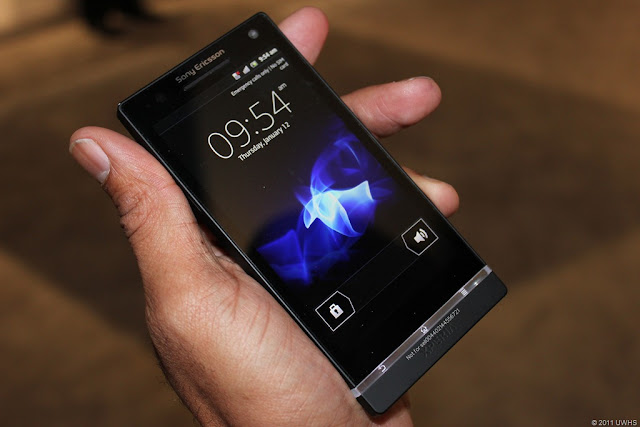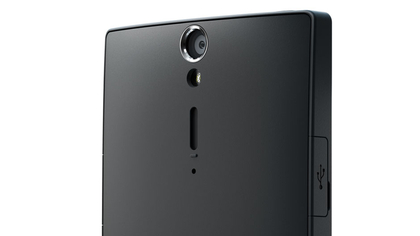Let's start this review by getting one thing out of the way first:
the Samsung Galaxy S II is the best Android phone on the market, by
far. It may also be the best smartphone on the market, period, even if
we think this ultimately comes down to personal preference. The Galaxy S
II combines one of the biggest and best screens on the market, with
blazing performance, functional, stable software and decent battery
life.
The Samsung Galaxy S II is constructed largely from
plastic, but we don't think this detracts from its overall appeal. In
fact, we think it actually enhances it purely for the fact that the
Galaxy S II is just 8.49mm thick. This makes it thinner than the iPhone 4
and likely the thinnest smartphone in the world.
The plastic construction means the Galaxy S II
weighs a very light 116g, but its sheer size makes it comfortable to
hold, and easy to slip into your pocket. The design does not feel
flimsy or poorly constructed, and we like the attractive carbon-like
finish on the rear battery cover. Although this part of the phone is
thin, difficult to remove and does initially feel a little flimsy, it
doesn't rattle or creak once clicked into place.
The Samsung Galaxy S II's design may not evoke the
same plaudits as competitors like the HTC Desire HD, which is
constructed from a single block of aluminium, but Samsung seems to have
struck a near-perfect balance with size, weight and aesthetic appeal.
The Samsung Galaxy S II has a physical (tactile)
home key, along with touch sensitive back and menu buttons. The
power/lock screen button is perfectly positioned on the right, making
it easy to access single-handed, while the same applies to the
left-mounted volume controls. The only missing features are a
notification LED and a physical camera shutter key. It's hard to keep
the Galaxy S II still when taking a photo with the onscreen shutter
button.
The killer feature of the Samsung Galaxy S II is
its 4.3in Super AMOLED Plus display. It's one of the best screens we've
seen on a smartphone to date, producing vivid colours, superb viewing
angles and rich brightness.
Sunlight legibility is also superb. On full
brightness, the Galaxy S II's screen can easily be seen in strong
direct sunlight. These attributes combined with the large 4.3in size
mean the Galaxy S II is the perfect smartphone for video playback. The
iPhone 4's 3.5in screen looks almost tiny in comparison, and the extra
screen real estate really makes a difference in day to day use,
particularly given Android's widget-focused home screens.
Two minor sour points concerning the display are
the fact that some images do appear to look a little oversaturated, and
that text is sometimes hard to read, especially when zoomed out. The
latter is particularly evident in the web browser. Small fonts seem to
look worse than other Android phones with the same resolution. The
Samsung Galaxy S II's WVGA resolution of 800x480 can't quite match the
iPhone 4's "retina" resolution (960x640), or the qHD resolution
(540x960) of the Motorola Atrix, but the resolution itself doesn't seem
to be the cause. We feel this might be a rendering issue.
T
he Samsung Galaxy S II
has a 4.3in Super AMOLED Plus display that produces vivid colours,
superb viewing angles and rich brightness.
Software
The Samsung Galaxy S II runs the latest version of
Google's Android operating system, 2.3 "Gingerbread", and also
features Samsung's TouchWIZ 4.0 UI overlay. Although it is not as
comprehensive as HTC's Sense UI seen on phones like the HTC Desire and
Desire HD, TouchWIZ UI is both attractive and functional. The default
Samsung weather, clock and power widgets quickly found a permanent home
on our screen, and you can easily customise the main app menu by
creating folders. Annoyingly, you can't automatically sort the icons in
the main menu, though you can move them around manually.

Samsung has included a number of other nifty
functions in its TouchWIZ software. Swiping left on a contact in your
phonebook will immediately call that person, and swiping right will
message them. You can also turn the Galaxy S II over on a desk or table
to silence an incoming call. Other "motion based" features include the
ability to tap and hold the screen at two points and tilt back and
forth to zoom in and out of the browser or gallery, and move a selected
home screen icon to another screen by holding it and moving the phone
left of right. These features will wow onlookers, but aren't practical
for day to day use.
The Galaxy S II also comes with four Samsung
software hubs: the social hub, readers hub, game hub and music hub. Of
these four, we found the readers hub (which integrates electronic
newspapers, books and magazines) the most useful, even if is just quick
access to Kobo and Zinio apps which are freely available to download
from the Android Market. As for the other Samsung hubs, we prefer using
separate apps to social hub (which groups social networking, email and
IM accounts), the music hub is a pointless music service, and the
games hub simply searches for and lists compatible games in the Android
Market.
There are a few niggling aspects about Samsung's
TouchWIZ UI that we don't like, but none are a deal breaker. The
default lock screen is slow to slide and feels sluggish on such a top
end phone, the TouchWIZ home screens don't scroll as fast as we'd like
(even if the overall experience is smooth), and the phone is sometimes
slow to wake when unlocked. Finally, we like Samsung's default keyboard
in general, but it has annoyingly replaced the comma key with a voice
input button.
The Galaxy S II comes with a Vlingo Voice Talk app
that can be activated by double tapping the home button. Like most
voice activated software, the process is slow and the results are often
hit and miss, though it does work reasonably well when combined with
Google Maps Navigation in the car, provided you are speaking close
enough to the microphone.
We found the Readers
Hub, which integrates electronic newspapers, books and magazines, the
most useful out of the Samsung software hubs
Performance and battery life
The Samsung Galaxy S II is powered by a 1.2GHz dual-core processor and this means one thing: it's fast. Very fast.
This is most evident when browsing the web: the
Galaxy S II loads pages much faster than the iPhone 4 when connected to
the same Wi-Fi network, and also breezes through most everyday tasks
without a hint of slowdown. The web browser has full Flash video
support, while pinch to zoom and scrolling are smooth and fast. The
Galaxy S II is very stable, and we did not experience a single crash in
over a week of use. It's clear it is not a half-baked phone that was
rushed to release, and feels very much like a finished product, a feat
than many other Android phones can't claim.
The Galaxy S II boasts 21Mbps download speeds and
5.76Mbps upload speeds, which is faster than most smartphones, and even
many dedicated USB modems. Running a speed test application over
Telstra's Next G network, we managed to achieve a peak download speed
of over 5Mbps.
The Samsung Galaxy S II is also one of the best
Android phones on the market when it comes to battery life. It is far
superior to the HTC Desire HD, which is widely regarded as one of the
poorest smartphones for battery life, and it comfortably beats the Sony
Ericsson XPERIA Arc as well.
With moderate use, the Galaxy S II will easily
last over a full day, and may even stretch up to one and a half days.
During extreme use though, we found the Galaxy S II managed to last a
maximum of about 14 hours. The display is the main cause of battery
drain, often accounting for over 40 per cent of power usage, while
Wi-Fi is also a big power user. For optimum battery life, we recommend
keeping the brightness down and switching both Wi-Fi and GPS off when
not in use.
Multimedia and other features
The Samsung Galaxy S II comes with an 8-megapixel
camera that doubles as a full HD 1080p video recorder, and also has a
2-megapixel front camera for video calls. Samsung has slightly tweaked
the standard camera application and the changes are all positive. On
the left menu you can customise four shortcut keys to include any of
the camera's comprehensive settings, including effects, exposure,
metering, blink detection and anti-shake, while the right side houses
the capture key, along with a quick link into the gallery and the
ability to switch from the rear camera to the front. The video mode
also mirrors the same settings.
Images captured have plenty of detail and
surprisingly minimal image noise, while video is smooth and sharp. Our
only real complaint is the lack of a camera shutter key, which would
have made capturing photos and videos a little easier. Video recording
in particular is hard to keep steady. Importantly, both the camera and
video apps matched the Galaxy S II's blinding speed elsewhere.
The Samsung Galaxy S II doesn't have a HDMI-out
port but comes with something better: a new connection technology
called Mobile High-Definition Link (MHL). The on-board MHL technology
uses the Galaxy S II's standard micro USB port to output 1080p HD video
and audio via HDMI. You'll need an optional micro USB-to-HDMI MHL
connector to enable this feature, but the beauty of MHL means it can
also be used with an optional USB adapter, meaning the Galaxy S II can
utilise USB on-the-go functionality like the Nokia N8.
It's a shame none of these connectors are included
in the sales package. The Galaxy S II also comes with DLNA, Wi-Fi
Direct and Wi-Fi hotspot functions, so it is well equipped for
multimedia sharing.
Believe it or not, the Samsung Galaxy S II makes
phone calls as well. The built-in loudspeaker is loud and clear for
both audio playback and phone calls, though the speaker does tend to
distort heavy bass and is also in an awkward position, placing the
Galaxy S II on a flat surface covers it. We also felt the volume of the
regular earpiece for calls could have been louder, and our callers did
sometimes complain they couldn't hear us too well when we were talking
softly.































































